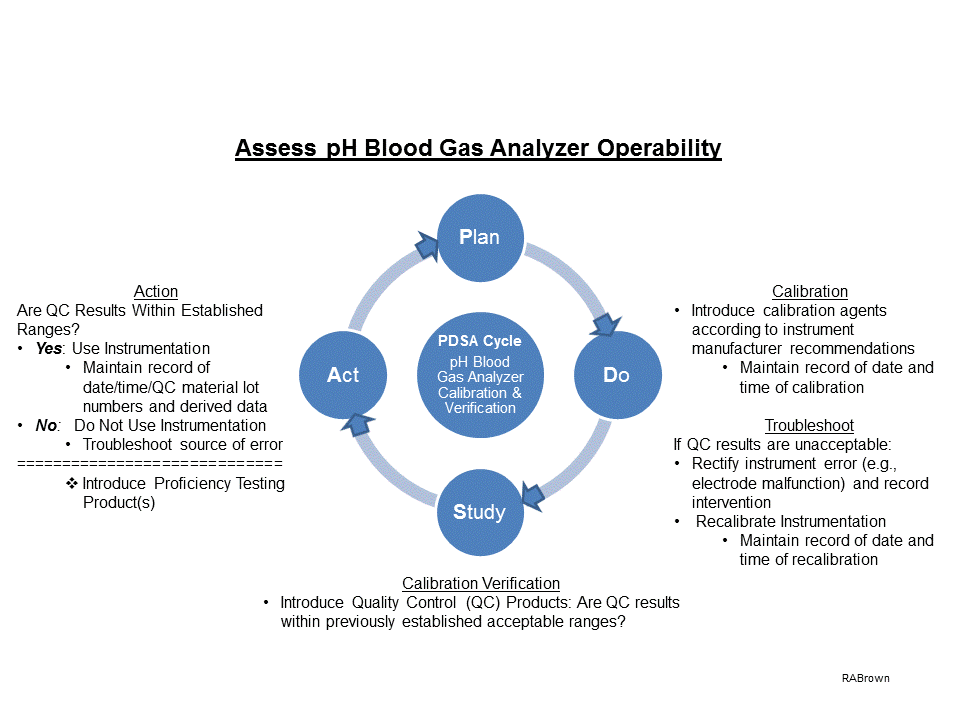
Before getting into this section, please consider the following:
Spirometer calibration is commonly performed as follows (after the system has been sufficiently powered on and pertinent information entered):
A) Introduce a constant volume (e.g. from a 3L calibration syringe) at various injection and withdrawal flows (low to high ranges),
B) Evaluate data and assess if the recovered volumes are within a previously established acceptable range,
C) If the recovered volume(s) is, or are, not acceptable, trouble-shoot the potential source(s) of error,
D) Recalibrate the system, assess the derived data, re-trouble-shoot and calibrate if necessary. Institute the spirometer once successfully calibrated.
- Follow a similar process when performing QC: Spirometer validation with a different calibration syringe (same or larger volume), biologic control(s), etc.
This spirometer calibration process essentially follows the Implementation Science concept of the Plan-Do-Study-Act (PDSA) Cycle:
Plan (P): Calibrate Spirometer
Do (D): Introduce constant volume at various flows
Study (S): Evaluate recovered data
Act (A): Trouble-shoot, recalibrate, reassess derived data, and proceed accordingly.
The following scenario might be more challenging, yet applicable, to the Pulmonary Diagnostic (PD) Services arena:
The ATS/ERS has updated Spirometry recommendations. Spirometry is performed by the Respiratory Care (RC) staff when PD Services is not in operation (e.g., after hours). The responsibility of assuring the quality of all Spirometry is under the auspices of the PD Services.
Which individual, or set of, IS concept(s) can be utilized when developing a plan to assure training RC staff on the ATS/ERS Spirometry update, assessing the understanding of the update, assuring initial and sustained competency, determining frequency of monitoring, when re-education might be needed, etc.? This listing is not comprehensive, but includes some key concepts when considering the development of a sustainable implementation plan.
This section will hopefully provide some insights into the importance of incorporating Implementation Science concepts into the Pulmonary Diagnostic Laboratory setting. Numerous healthcare professional organizations are encouraging their members to be more proficient in understanding IS principles and applying them in practice. The primary intent is to improve the quality of delivered patient care.
While the following IS examples may be more RC focused, use your imagination on how these concepts can be successfully incorporated into your laboratory practice.
Go to Implementation Science Primer of Key Concepts at: https://pftlabresources.com/implementation-science-a-primer-of-key-concepts-for-the-respiratory-care-practitioner/